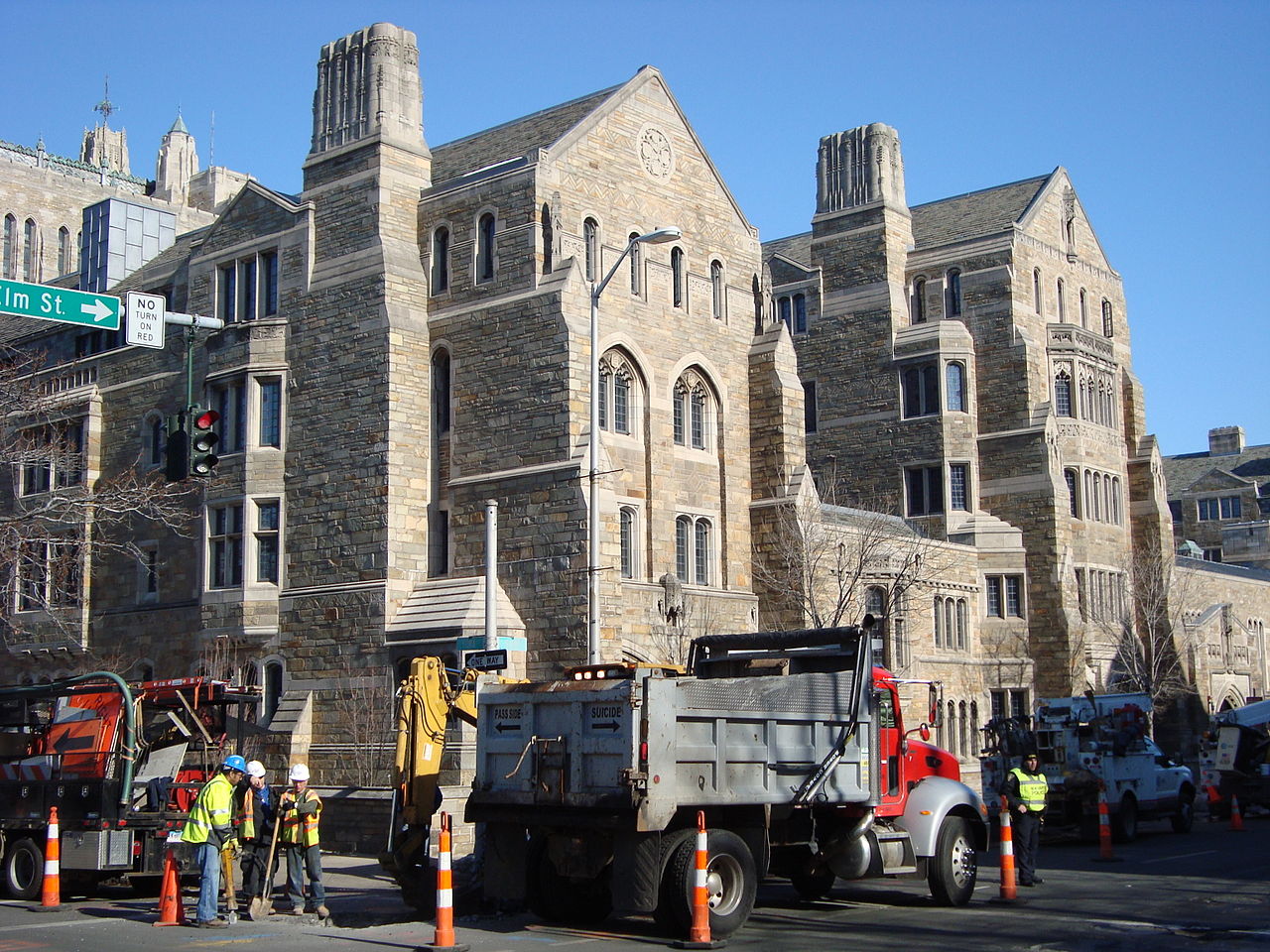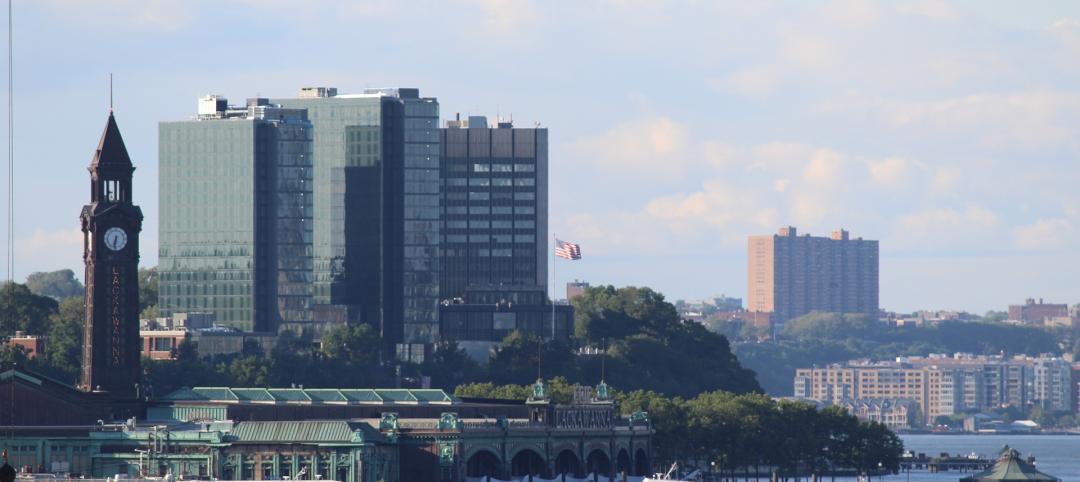December 7, 2015: Yale University has launched a first-of-its-kind pilot program to put a price tag on the use of carbon — with some of the most prominent campus buildings playing a role in the experiment.
Twenty Yale buildings — including the Peabody Museum of Natural History, the School of Management’s Evans Hall, the School of Medicine’s Yale Physicians Building, and Yale Divinity School’s Sterling Divinity Quad — are taking part in the new carbon charge pilot program. So is Woodbridge Hall, the administrative home of Yale President Peter Salovey.
“The carbon charge concept originated as a proposal from Yale undergraduate and graduate students interested in using our campus as a living laboratory for applied research,” said Salovey, who announced the program with Provost Benjamin Polak. “Students were an integral part of the Presidential Carbon Charge Task Force, and many continue to serve in the pilot. Yale’s carbon charge pilot project is an exciting example of how students, faculty members, and staff can collaborate to build a more sustainable and innovative Yale.”
Placing a monetary value on carbon use is considered critical to creating an effective sustainability strategy and is a growing trend in the private sector. The idea is to prompt behavior changes at the individual and organizational levels by putting a price on the carbon dioxide used. Carbon dioxide is a byproduct of all activities that rely on the combustion of fossil fuels for power.
Yale has approximately 350 buildings and uses 3.6 million MMBtu of energy each year. The university generates 60% of its own power at its two co-generation power plants. The remaining electricity is purchased from United Illuminating Co., and natural gas is purchased from Southern Connecticut Gas to power the power plants. The university emits roughly 300,000 tons of carbon dioxide a year. In 2005, Yale pledged to reduce its primary greenhouse gas emissions 43% below 2005 levels by 2020. The university remains on track to meet this ambitious goal.
In 2014, Salovey outlined six sustainability initiatives for Yale, noting that, “Global climate change and its consequences are critical challenges for our time, and Yale has important and necessary roles to play in addressing them.” The initiatives included a $21 million capital investment in energy conservation and greenhouse gas reduction, an expansion of renewable energy, third-party verification of Yale’s greenhouse gas emissions, and the formation of the Presidential Carbon Charge Task Force.
The task force, chaired by Sterling Professor of Economics William Nordhaus, began looking into the feasibility of an internal carbon-pricing program in 2014. Earlier this year, the group presented its recommendations to Salovey. Among those recommendations were that Yale set a carbon charge at the social cost of carbon, currently estimated by the federal government to be $40 per ton of carbon dioxide.
“A key element is that the carbon charge program would expand Yale’s role as a pioneer in research, teaching, and designing practical applications of energy and climate policies,” Nordhaus said. “It would thereby contribute to society’s learning about ways to slow climate change while advancing Yale’s educational mission.”
One novel aspect of Yale’s pilot program is that it is essentially a quartet of experiments to find the best approach to carbon pricing. Each experiment will have five Yale buildings testing a particular manner of carbon pricing:
A market-based model will have Yale units competing with one another to earn rebates.
A target-based model will ask Yale units to meet specified carbon-use goals, in order to earn rebates that are applied to the unit’s annual budget.
An investment model will have Yale units paying a monthly carbon tax for the year. At the end of the year, units will get the money back, with a stipulation that a percentage of the returned money be spent on additional energy-saving measures within their building.
A price signal approach will present Yale units with detailed information about ongoing energy use, along with comparable information about past years’ energy use. The units also will receive regular updates on how their performance would translate into a straight carbon tax payment at the social cost of carbon, purely for informational purposes.
“This will help us arrive at the best model for Yale and allow us to share the lessons we learn with other institutions. That’s a key aspect of the program,” said Ryan Laemel, Yale’s carbon charge project coordinator. “There is no one-size-fits-all approach that works for internal carbon pricing.” (See "How Yale's Carbon Charge Project Works," below.)
The pilot program includes classrooms, residential colleges, laboratories, and offices. Other buildings taking part include Berkeley, Jonathan Edwards, and Pierson residential colleges; the Gilder Boat House; Kroon Hall; and the Yale Health Center.
“It goes beyond simply diversifying the size of the buildings or their carbon footprints. It includes a range of different activity types, budgeting categories, utilities used, building users, and equipment contained,” said carbon charge project manager Jennifer Milikowsky, who is a recent graduate of the joint degree program at the School of Forestry & Environmental Studies and the School of Management. “By doing this we’ll begin to learn how the success of the policies we are testing is influenced by these different characteristics and will help as we continue to expand and improve this project.”
In their announcement, Salovey and Polak noted that feedback from participants and an analysis of the program’s results would inform a broader campus conversation on the topic. “We believe that this pilot project can serve as a model for other institutions, expanding Yale’s role as a pioneer in researching, teaching, and designing climate change solutions,” they said.
Related Stories
Resiliency | Jan 2, 2024
Americans are migrating from areas of high flood risk
Americans are abandoning areas of high flood risk in significant numbers, according to research by the First Street Foundation. Climate Abandonment Areas account for more than 818,000 Census Blocks and lost a total of 3.2 million-plus residents due to flooding from 2000 to 2020, the study found.
Sustainability | Jan 2, 2024
Los Angeles has plan to improve stormwater capture and source 80% of water locally
Los Angeles County’s Board of Supervisors voted for a plan to improve stormwater capture with a goal of capturing it for local reuse. The plan aims to increase the local water supply by 580,000 acre-feet per year by 2045.
75 Top Building Products | Dec 13, 2023
75 top building products for 2023
From a bladeless rooftop wind energy system, to a troffer light fixture with built-in continuous visible light disinfection, innovation is plentiful in Building Design+Construction's annual 75 Top Products report.
Codes and Standards | Nov 27, 2023
Hoboken, N.J.’s street design policies are saving lives
Transportation policies enacted in Hoboken, N.J. over the past several years are paying off in the form of fewer pedestrian deaths and injuries. The city has adopted daylighting, bike lanes, lower speed limits, and intersection redesigns to make its roads safer.
Resiliency | Nov 27, 2023
All levels of government need to act to cope with climate-driven flooding and sea level rise
The latest National Climate Assessment highlights the need for local, state, and federal governments to adopt policies to mitigate the effects of climate-driven flooding and sea level rise, according to a policy expert with the National Resources Defense Council.
Resiliency | Nov 16, 2023
How inclusive design supports resilience and climate preparedness
Gail Napell, AIA, LEED AP BD+C, shares five tips and examples of inclusive design across a variety of building sectors.
Codes and Standards | Nov 10, 2023
Washington state building codes to protect structures from wildfire provoke controversy
New building codes in Washington state intended to protect structures from wildfires are provoking backlash from builders, cities, and environmentalists. Critics charge that the rules that are scheduled to take effect March 15 are confusing, will increase housing costs, and could cause too many trees to be cut down.
Sustainability | Nov 1, 2023
Researchers create building air leakage detection system using a camera in real time
Researchers at the U.S. Department of Energy’s Oak Ridge National Laboratory have developed a system that uses a camera to detect air leakage from buildings in real time.
Resiliency | Oct 19, 2023
Jacksonville unveils 50-year strategy for resiliency to flooding, extreme heat, wildfires
The City of Jacksonville, Fla., recently released plans for Resilient Jacksonville, a 50-year resiliency strategy to reduce the risks from flooding, hurricanes, excessive heat, and wildfires, and to respond better to those events. The plan includes ways to stop the St. Johns River from flooding vulnerable neighborhoods, including those prone to flooding during heavy rain or hurricanes.
Engineers | Oct 12, 2023
Building science: Considering steel sheet piles for semi-permanent or permanent subsurface water control for below-grade building spaces
For projects that do not include moisture-sensitive below-grade spaces, project teams sometimes rely on sheet piles alone for reduction of subsurface water. Experts from Simpson Gumpertz & Heger explore this sheet pile “water management wall” approach.

















